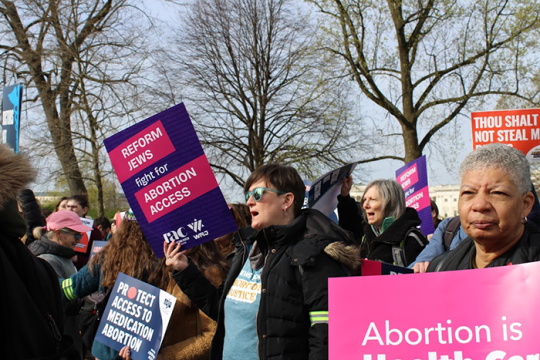If you’ve turned on the television or even glanced at a newspaper over the past several weeks, you’ve likely seen coverage of Ray Rice, the Baltimore Ravens running back who punched his then-fiancée Janay in an elevator. The renewed conversation about Rice’s actions and about the NFL’s reaction is a disheartening, if timely introduction to Domestic Violence Awareness Month, which we observe in October to boost anti-violence efforts and to draw critical attention to a problem far too often swept under the rug.
With greater public attention being paid to incidences of sexual violence and violence against women – in the NFL and on college campuses are two examples that come to mind first – what can we learn about how our culture at large understands domestic violence? It echoes harmful myths that, until not so long ago, relegated domestic violence to the private sphere: domestic violence was a personal, private matter between spouses rather than an issue of national concern for gender equality and fundamental respect for all people. Beginning the 1980s, advocates against domestic violence were able to bring the issue to national attention for the first time, initiating cultural shift that eventually brought about passage of the 1994 Violence Against Women Act (VAWA), which for the first time made domestic and sexual violence a crime under federal law.
VAWA built upon and brought about profound progress in the effort to eliminate violence against women. But we have a long way to go toward preventing domestic violence and toward understanding its complexities while it persists. When Janay Palmer married Ray Rice even after he hit her, her decision prompted critics to ask why a person would ever choose to stay with her abuser rather than to end the relationship. But that inquiry, asked far too commonly of survivors of violence, masks the complex realities of intimate partner violence. Abuse often extends beyond physical or sexual abuse to include a web of tactics, including economic abuse and emotional manipulation, that contribute to a person’s choice not to leave.
The question “Why didn’t she leave?” is simplistic, and it reflects a broader cultural belief that places the burden of ending a violent situation on the abused rather than on the abuser. Leaving an abusive relationship is not always an option, nor is it always a desired end. A victim of domestic violence need not leave in order for the abuse to stop; rather, the responsibility is the abuser’s to abandon abusive tactics in favor of respectful behavior.
Jewish values shape our firm belief that relationship abuse in all its forms—physical, emotional, economic—is a moral abhorrence. Maimonides teaches in Mishneh Torah that “a man should honor his wife more than he honors himself, and love her as he loves himself. And if he has money, he should increase her benefits according to his wealth. He should not intimidate her too much; he should speak with her gently, and should be neither saddened nor angry” (Sefer Nashim 15:19). Rather, our tradition compels us to build relationships on mutual respect, sharing and communication, not on power and control.
Throughout the month of October on RACblog, we’ll be discussing issues related to Domestic Violence Awareness Month. Click here to find the latest updates and to see what you can do to help prevent domestic violence. To start, urge your Members of Congress to support the International Violence Against Women Act (H.R. 3571/S. 2307), which provides concrete tools to prevent violence against women and girls worldwide.
Related Posts
Image

Remarks from Rabbi Eliana Fischel at Jewish Gathering for Abortion Access
Rabbi Eliana Fischel, Associate Rabbi at Washington Hebrew Congregation in Washington D.C., spoke at a Jewish community gathering just before the Supreme Court heard oral arguments in FDA v. Alliance for Hippocratic Medicine regarding the future of Mifepristone, one of two medications commonly used in medication abortion.
Image

Teens from North Carolina Speak About Environmental Justice
This year, as we approach Earth Day on April 22nd, we are amplifying the voices of our L'Taken participants. These teens, who are at the forefront of our fight for environmental justice and climate change, are not just the future-they are the present.
Image

Why is this Right Different?: City of Grants Pass, Oregon v. Johnson and the Passover Call to Action
As families prepare for the Passover seder and its celebration of freedom, the Supreme Court will hear a case in which the basic civil rights of unhoused people are at stake.
